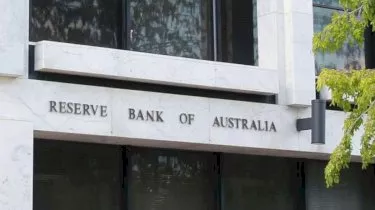Borrow
How risky is Australia’s household debt?
The central bank has warned house prices could plummet in the event of severe economic slowdown, but it would only trigger a small increase in the share of mortgages at risk of defaulting.
How risky is Australia’s household debt?
The central bank has warned house prices could plummet in the event of severe economic slowdown, but it would only trigger a small increase in the share of mortgages at risk of defaulting.

The Reserve Bank of Australia published a discussion paper, How Risky is Australian Household Debt?, which studied how Australia’s high debt to income (DTI) would impact the economy.
The Bank of International Settlements (BIS) stated in 2019 that Australia’s debt is higher than any other English-speaking nation, sitting second behind Switzerland.
The RBA stress-tested this impact by creating a macroeconomic scenario in which unemployment rose to 8 per cent and the price of residential properties plummeted by 40 per cent.
“We believe this is an extreme but plausible scenario, which is broadly in line with the shock experienced by some countries during the global financial crisis,” the authors noted.

After conducting the stress test, the authors found that such a scenario would only result in a “small” increase in the share of “household debt at risk” as a proportion of the banking system’s collective mortgage portfolio, from 0.8 of a percentage point to 2.1 per cent.
“These estimates are low because housing loans account for the majority of household debt in Australia and these tend to be very well collateralised,” the authors stated.
According to the report, the Australian banking sector’s resilience reflects the lower credit risk profiles of borrowers, relative to other parts of the world.
“[The] estimate is substantially lower than actual loss rates in Ireland and the United States during the global financial crisis,” the report stated.
“This is mainly because Australian mortgages have low LVRs by international and historical standards.”
The authors observed that less than 10 per cent of new loans originated in Australia are written at LVRs above 90 per cent, compared with close to 50 per cent of new loans in countries that experienced a “boom-bust cycle” during the financial crisis.
The RBA report added that mortgage debt is typically held by households with strong servicing capacity.
“Highly indebted households tend to have lower estimated probabilities of unemployment and higher incomes,” the report stated.
“This means they are less likely to experience income shocks that will reduce their ability to meet mortgage repayments.”
The authors added that stress would be further alleviated if home loan rates were to decline.
Moreover, the report noted that banks are well capitalised and remain above their capital conservation buffer of 8 per cent.
“Of course, household loans only comprise 40 per cent of banks’ total assets. If we assume banks are also exposed to losses on banks’ other portfolios (such as business loans, securities and other assets), equivalent in magnitude to recent APRA stress tests, banks’ capital ratios fall to around the top of their capital conservation buffer,” the authors observed.
The report concluded: “This suggests that the Australian banking system remains robust to losses stemming from rising household debt, largely because they participate in very little high-LVR lending and are well capitalised.”
About the author

About the author


Loans
Navigating the Australian student loan landscape: Options for financing your education
Securing financing for post-secondary education is a significant step for many Australians, offering a pathway to advancing career prospects and achieving personal growth. Read more

Loans
Secured vs. unsecured personal loans: Which is right for you?
When considering a personal loan in Australia, one of the first decisions you'll face is whether to opt for a secured or an unsecured loan. Each type has distinct advantages and drawbacks, and the ...Read more

Loans
Weighing up interest-only home loans: What Australian borrowers need to know
Interest-only home loans have become a topic of considerable interest among Australian borrowers, offering a unique approach to home financing. This type of loan allows borrowers to pay only the ...Read more

Loans
Bridging loans demystified: Navigating your next property purchase in Australia
Navigating the property market can be daunting, especially when timing issues arise between selling your current home and purchasing a new one. Bridging loans offers a solution, providing the ...Read more

Loans
Ultimate guide to green loans: Financing sustainable home projects in Australia
As Australians become increasingly conscious of their environmental impact, many are turning to sustainable home improvements to reduce their carbon footprint and enhance energy efficiencyRead more

Loans
CBA launches digital home loan with 10-minute application
According to the bank, Unloan will provide a single low-cost interest rate to borrowers with an application time of as little as ten minutes. Read more

Loans
Are central banks weighing the economic pain of rate hikes?
The hype around interest rate hikes usually centres around the urgent and fundamental need to alleviate the consequences of inflation – but does this monetary policy do more harm than good? Read more

Loans
As rates begin to rise, how much more will new borrowers pay?
Mortgage holders could be asked to pay over $1,000 more per month due to rising interest rates. Read more

Loans
Navigating the Australian student loan landscape: Options for financing your education
Securing financing for post-secondary education is a significant step for many Australians, offering a pathway to advancing career prospects and achieving personal growth. Read more

Loans
Secured vs. unsecured personal loans: Which is right for you?
When considering a personal loan in Australia, one of the first decisions you'll face is whether to opt for a secured or an unsecured loan. Each type has distinct advantages and drawbacks, and the ...Read more

Loans
Weighing up interest-only home loans: What Australian borrowers need to know
Interest-only home loans have become a topic of considerable interest among Australian borrowers, offering a unique approach to home financing. This type of loan allows borrowers to pay only the ...Read more

Loans
Bridging loans demystified: Navigating your next property purchase in Australia
Navigating the property market can be daunting, especially when timing issues arise between selling your current home and purchasing a new one. Bridging loans offers a solution, providing the ...Read more

Loans
Ultimate guide to green loans: Financing sustainable home projects in Australia
As Australians become increasingly conscious of their environmental impact, many are turning to sustainable home improvements to reduce their carbon footprint and enhance energy efficiencyRead more

Loans
CBA launches digital home loan with 10-minute application
According to the bank, Unloan will provide a single low-cost interest rate to borrowers with an application time of as little as ten minutes. Read more

Loans
Are central banks weighing the economic pain of rate hikes?
The hype around interest rate hikes usually centres around the urgent and fundamental need to alleviate the consequences of inflation – but does this monetary policy do more harm than good? Read more

Loans
As rates begin to rise, how much more will new borrowers pay?
Mortgage holders could be asked to pay over $1,000 more per month due to rising interest rates. Read more








